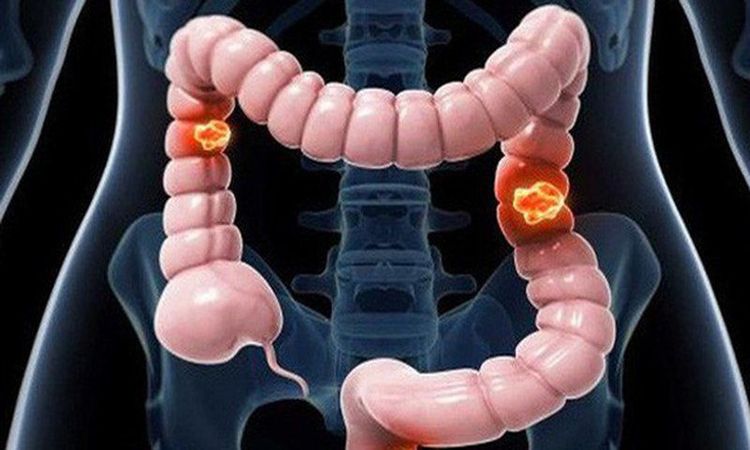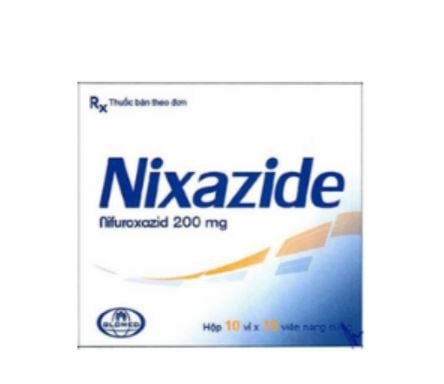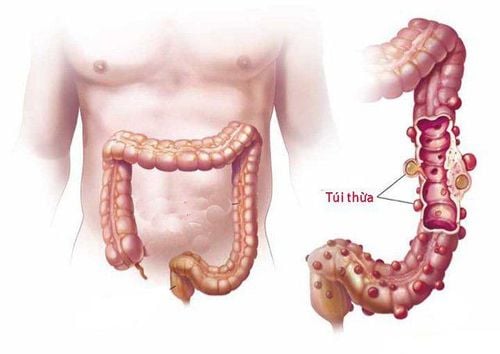This is an automatically translated article.
Laparoscopic ileostomy to transverse colon is usually performed when right colon polyps of various causes cannot be surgically removed. In addition, surgery is also performed in cases of ileocecal tuberculosis or intestinal adhesions.
1. What is ileostomy to transverse colon surgery?
Colon cancer is a fairly common cancer in the world. The mortality rate from colon cancer ranks fourth among all cancers, after lung cancer, stomach cancer and liver cancer. However, colon cancer is one of the few curable and preventable malignancies. If detected early, the cure rate can be as high as 90%. Treatment of colon cancer is mainly surgery. The surgical method chosen depends on the stage of the disease of each patient.
Laparoscopic ileostomy to transverse colon is surgery to create an opening connecting the digestive tract directly between the small intestine and the transverse colon. Surgery is indicated when the right colon tumor cannot be removed due to the following reasons:
Tumor is large, has invaded or metastasized to other organs causing complete intestinal obstruction. Colon polyps can be removed, but the patient's health conditions or the medical facility's human and physical conditions do not allow colectomy surgery. In addition, laparoscopic surgery to connect the ileum to the transverse colon may also be indicated in the following cases: ileocecal TB causes damage, complete intestinal obstruction or patients with intestinal adhesions whose health conditions do not allow surgery. bowel resection.

Phẫu thuật là phương pháp phổ biến điều trị ung thư đại tràng
2. How is laparoscopic anastomosis to transverse colon performed?
2.1. Preparation before laparoscopic anastomosis with transverse colon
The patient and family will be clearly explained by the medical staff about the disease and general condition, the purpose of the surgery, possible complications due to the disease, surgery, anesthesia, and local conditions. . If you agree to have surgery, the patient or his or her representative will sign a consent form for surgery.
To prepare for surgery, the patient will be supplemented with nutrition, supplemented with water and electrolytes, examined before surgery and performed diagnostic tests. The doctor will prescribe a gastric suction tube if the patient has signs of intestinal obstruction. The patient will be given antibiotics to prevent infection and perform an enema to clean the colon according to the surgical plan.
On the side of the medical facility, based on the results of clinical and paraclinical examination, doctors will assess the disease status and the consequences of the disease such as intestinal obstruction, metastasis to organs due to cancer, inflammation peritoneal analysis, ... evaluate the whole body condition such as age, geographical location, and severe chronic diseases that are likely to affect the surgery as well as the postoperative period. The comprehensive assessment and review of surgical possibilities helps the surgery to take place in the safest and most effective way.
2.2. Steps to perform laparoscopic surgery connecting the ileum to the transverse colon
The patient is given intravenous or endotracheal anaesthesia. The surgeon places 3 trocars: 1 10mm trocar placed above or below the navel to place the bronchoscope, 1 5mm trocar placed in the right iliac fossa for manipulation, 1 5mm or 10mm trocar placed in the left iliac fossa to insert instruments. straight jointing tool (GIA) to perform the seam. Based on the captured image on the screen, the doctor will evaluate the main injury and the condition of other organs in the abdomen. Selecting the site to use the bypass ensures the criteria such as good vascular, pink, soft, not letting too many intestinal necrosis,... The doctor will perform the side-to-side anastomosis with a suture cutting machine. straight GIA 60mm in the same direction or in the opposite direction of peristalsis. When a full anastomosis was performed endoscopically against peristalsis, the ileum was opened with a hole that just inserted one end of the GIA, and the transverse colon was opened just enough at the position of the longitudinal muscle band. After the anastomosis is performed, the opening is closed with a removable suture, and the surgeon can strengthen the two ends of the anastomosis if necessary. In case of open surgery using laparoscopic support: after determining the suitable suture position for ileostomy with transverse colon, the doctor will make an incision to place the trocar 10mm below the navel, bring out the ileum and transverse colon. outside, perform an extra-abdominal anastomosis. After completing the suture, the doctor will proceed to clean the abdomen, close the abdominal wall and the trocar holes. Depending on the actual surgery, the doctor will decide whether to drain or not.

Sau phẫu thuật bệnh nhân cần được theo dõi cẩn thận tránh biến chứng
3. Caring for patients after laparoscopic anastomosis to transverse colon
In the first 24 hours after surgery, the patient will be closely monitored for the whole body condition, measuring body temperature, pulse, blood pressure, breathing rate. Give the patient pain medication, antibiotics to prevent infection, parenteral nutrition to provide enough energy, water, electrolytes, protein, etc. In the following days, the patient will continue to receive infusions. fluids, antibiotics, ... as prescribed by the doctor. After defecation, the patient can have a light meal of porridge and milk. If the condition of the abdomen, incision, and the whole body are stable, the patient can be mobilized soon.
The majority of patients after surgery have favorable progress, can eat and drink, good bowel circulation. However, some patients may have complications as the cancer continues to progress, causing pain, poor appetite, weight loss, bleeding, etc. Patients with ileocecal tuberculosis or other nonspecific inflammatory forms After surgery, they will be transferred to the appropriate specialized treatment facility.
Common complications after surgery are narrowing, semi-obstruction of the anastomosis, bleeding at the anastomosis or in the abdomen, bursting of the anastomosis causing peritonitis or gastrointestinal fistula,...Depending on the specific case, the disease Patients will be treated conservatively or re-operated.
Gastrointestinal cancer screening is a scientific and effective measure for early detection of gastrointestinal cancers (esophageal cancer, stomach cancer, colon cancer) and providing a good treatment plan. best. Currently, Vinmec International General Hospital has a package of screening and early detection of cancers of the gastrointestinal tract (esophagus - stomach - colon) combined with clinical and paraclinical examination to bring the most accurate results. maybe.
When screening for gastrointestinal cancer at Vinmec, you will receive:
Gastrointestinal specialty examination with an oncologist (by appointment). Gastroscopy and colonoscopy with an NBI endoscope under anesthesia. Complete peripheral blood cytology (by laser counter). Automated prothrombin time test. Automated thrombin time test. Activated Partial Thromboplastin Time (APTT) test using an automated machine. General abdominal ultrasound To register for screening and treatment of gastrointestinal diseases at Vinmec International General Hospital, you can contact Vinmec Health System nationwide, or register for an online examination. HERE













